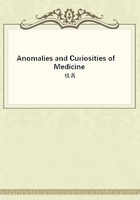
第57章
Aut quia quaerendi studio vis fessa parentum Aucupii aptas innuit esse manus."The Ephemerides gives examples of the child hiccoughing in the uterus. Cases of crying before delivery, some in the vagina, some just before the complete expulsion of the head from the os uteri, are very numerous in the older writers; and it is quite possible that on auscultation of the pregnant abdomen fetal sounds may have been exaggerated into cries. Bartholinus, Borellus, Boyle, Buchner, Paullini, Mezger, Riolanus, Lentillus, Marcellus Donatus, and Wolff all speak of children crying before delivery;and Mazinus relates the instance of a puppy whose feeble cries could be heard before expulsion from the bitch. Osiander fully discusses the subject of infants crying during parturition.
McLean describes a case in which he positively states that a child cried lustily in utero during application of the forceps.
He compared the sound as though from a voice in the cellar. This child was in the uterus, not in the vagina, and continued the crying during the whole of the five minutes occupied by delivery.
Cesarean Section.--Although the legendary history of Cesarean section is quite copious, it is very seldom that we find authentic records in the writings of the older medical observers.
The works of Hippocrates, Aretxeus, Galen, Celsus, and Aetius contain nothing relative to records of successful Cesarean sections. However, Pliny says that Scipio Africanus was the first and Manlius the second of the Romans who owed their lives to the operation of Cesarean section; in his seventh book he says that Julius Caesar was born in this way, the fact giving origin to his name. Others deny this and say that his name came from the thick head of hair which he possessed. It is a frequent subject in old Roman sculpture, and there are many delineations of the birth of Bacchus by Cesarean section from the corpse of Semele. Greek mythology tells us of the birth of Bacchus in the following manner: After Zeus burnt the house of Semele, daughter of Cadmus, he sent Hermes in great haste with directions to take from the burnt body of the mother the fruit of seven months. This child, as we know, was Bacchus. Aesculapius, according to the legend of the Romans, had been excised from the belly of his dead mother, Corinis, who was already on the funeral pile, by his benefactor, Apollo; and from this legend all products of Cesarean sections were regarded as sacred to Apollo, and were thought to have been endowed with sagacity and bravery.
Old records tell us that one of the kings of Navarre was delivered in this way, and we also have records of the birth of the celebrated Doge, Andreas Doria, by this method. Jane Seymour was supposed to have been delivered of Edward VI by Cesarean section, the father, after the consultation of the physicians was announced to him, replying: "Save the child by all means, for Ishall be able to get mothers enough." Robert II of Scotland was supposed to have been delivered in this way after the death of his mother, Margery Bruce, who was killed by being thrown from a horse. Shakespere's immortal citation of Macduff, "who was from his mother's womb untimely ripped," must have been such a case, possibly crudely done, perchance by cattle-horn. Pope Gregory XIVwas said to have been taken from his mother's belly after her death. The Philosophical Transactions, in the last century contain accounts of Cesarean section performed by an ignorant butcher and also by a midwife; and there are many records of the celebrated case performed by Jacob Nufer, a cattle gelder, at the beginning of the sixteenth century.
By the advent of antisepsis and the improvements of Porro and others, Cesarean section has come to be a quite frequent event, and a record of the successful cases would hardly be considered a matter of extraordinary interest, and would be out of the province of this work, but a citation of anomalous cases will be given. Baldwin reports a case of Cesarean section on a typical rachitic dwarf of twenty-four, who weighed 100 pounds and was only 47 1/2 inches tall. It was the ninth American case, according to the calculation of Harris, only the third successful one, and the first successful one in Ohio. The woman had a uniformly contracted pelvis whose anteroposterior diameter was about 1 1/4 inches. The hygienic surroundings for the operation were not of the best, as the woman lived in a cellar. Tait's method of performing the operation was determined upon and successfully performed. Convalescence was prompt, and in three weeks the case was dismissed. The child was a female of 7 1/2pounds which inherited the deformities of its mother. It thrived for nine and a half months, when it died of angina Ludovici.
Figure 15 represents the mother and child.
Harris gives an account of an operation upon a rachitic dwarf who was impregnated by a large man, a baby weighing 14 pounds and measuring 20 inches being delivered by the knife. St. Braun gives the account of a Porro-Cesarean operation in the case of a rachitic dwarf 3 feet 10 inches tall, in which both the mother and child recovered. Munde speaks of twins being delivered by Cesarean section. Franklin gives the instance of a woman delivered at full term of a living child by this means, in whom was also found a dead fetus. It lay behind the stump of the amputated cervix, in the culdesac of Douglas. The patient died of hemorrhage.
Croston reports a case of Cesarean section on a primipara of twenty-four at full term, with the delivery of a double female monster weighing 12 1/2 pounds. This monster consisted of two females of about the same size, united from the sternal notch to the navel, having one cord and one placenta. It was stillborn.
The diagnosis was made before operation by vaginal examination.